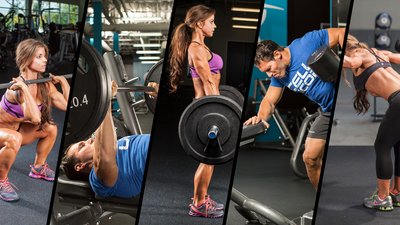In my recent article "Train for Your Type," we talked about the three major somatotypes, or body types, and broke down how to set up your training to make the most of what you were born with.
Ectomorphs, endomorphs, and mesomorphs all have unique needs based on their unique structure and metabolism. The article discussed how to customize your workout frequency and volume to match your body type, and touched on general guidelines for choosing the right exercises and rep ranges for you.
This time, we're going to get more specific, and prescribe the five best exercises for your body type guaranteed to deliver optimal physique-enhancing results!
Ectomorph
The ectomorph faces the most formidable challenge of all when it comes to gaining muscle mass. Ectomorphs are often naturally very low in body fat and have no problem showing crisp muscle definition, even when their diet is far from "clean." But when it comes to adding size as an ectomorph, let's just say it's much easier said than done.
If you have trouble adding muscle, your exercise selection should focus on basic, compound movements to deliver the most bang for your buck, allowing you to use maximum loads and recruit several major and minor muscle groups at once.
Here are the five best exercises for the hardgainer!
1. Barbell Bench Press
Since the 1940s, bodybuilders have referred to the flat barbell bench press as the king of upper-body exercises, and with good reason. The flat bench recruits all the pushing muscles of the upper body—pectorals, anterior deltoids, and triceps—in one movement.
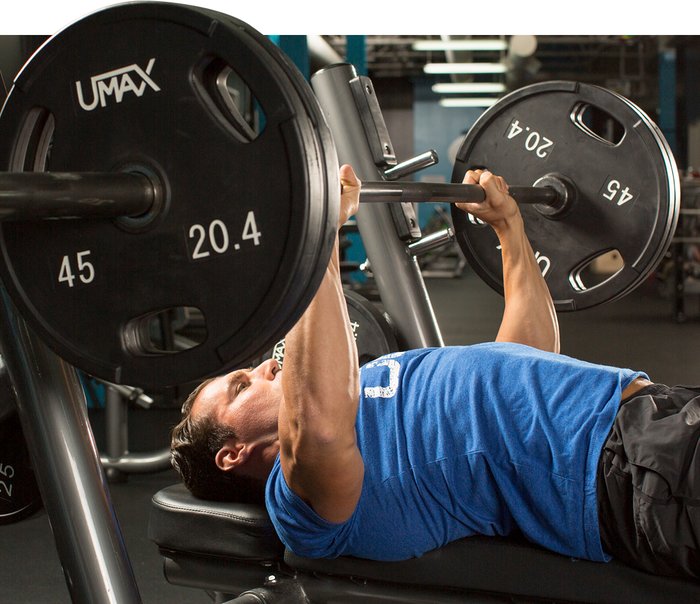
Why use a barbell rather than dumbbells or a machine? The barbell is one fixed piece of equipment as opposed to two independent pieces, and is easier to manage when loaded with heavier weights. That's why even if you can bench press 200 pounds for 10 reps, it's very doubtful you could get those same 10 reps with a pair of 100-pound dumbbells.
Greater loads on the muscles equal greater gains. So why not just load up a machine with even heavier weight than you could use with a barbell? Machines require zero core activation, and maintaining balance and coordination enhances the difficulty factor of the exercise. The barbell bench press requires just enough balancing and core activation, while still allowing those upper-body muscles to lift maximum loads.
2. Squat
Squats work every muscle in the lower body, including the glutes, quads, hams, and even the calves. If you could do just one exercise for the lower body, squats would be it.
Based on what you learned on the bench press about greater loads producing greater gains, you may be asking "why not do leg presses instead?" As with the machine example above, leg presses are just too easy to perform compared to squats. They require very little core stabilization and no upper-body strength.
That's why guys who can't even get a single good rep with 315 pounds on back squats can load up a leg press with 700-800 pounds. Squats force you to work brutally hard, using your entire lower body and core to drop down and come back up with a heavy loaded barbell on your back. There's a reason squats have built millions of mighty wheels!
3. Deadlift
Deadlifts are the closest thing you will ever find to a total-body exercise. The first half of the movement is essentially a squat, except you are holding the bar in front of you rather than keeping it on your shoulders.
This difference in load distribution brings your entire back complex into the exercise, all the way from the traps, to the lats, to your spinal erectors. These back muscles not only stabilize the bar as you hinge up, they also assist with the pull once the bar passes the knees.
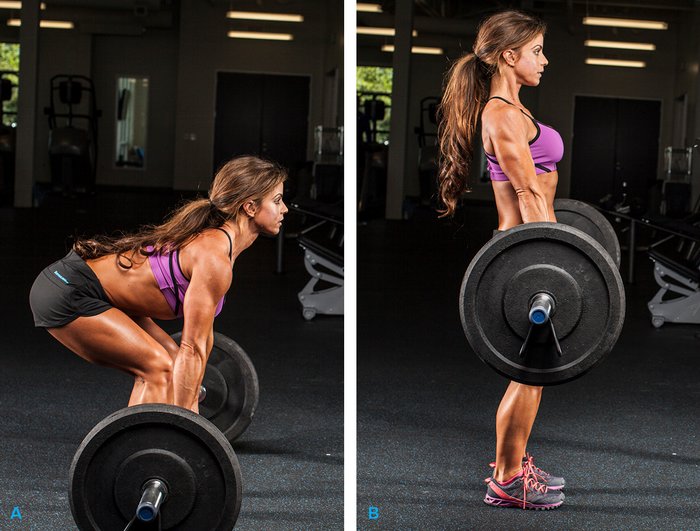
Add in that deadlifts are the heaviest lift, the one lift you can add the most weight to, and you can see why they are a must for anyone struggling to put on lean muscle.
4. Barbell Military Press
Ectomorphs tend to have narrower shoulders, so they need to beef them up with the most efficient methods possible. If you struggle to boulder your shoulders, the seated barbell military press is the way to go.
Just as with the barbell bench press, using the barbell for this lift makes it possible to lift heavier loads while still requiring a certain amount of balance and coordination. Have a seat and put those shoulders to work!
5. Barbell Row
Back thickness is what most ectomorphs lack, and barbell rows are the best way to amend this. Barbell rows force the lats to work hard as they battle gravity to pull the weight to the body while bent over.
And once more, barbells trump dumbbells, machines, and cables when it comes to maximum muscle stimulation.
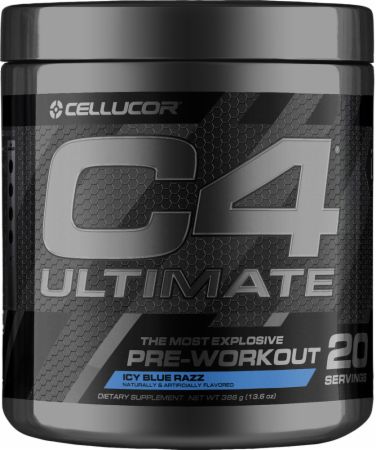
Endomorph
There are pros and cons to each body type. While the ectomorph often can get shredded with minimal effort, he usually struggles to gain any size. The endomorph has the opposite problem: Gaining size is a breeze, but losing fat and staying lean is a constant challenge.
In terms of building an aesthetically-pleasing physique, endomorphs have another difficulty, which is structural in nature. Many endomorphs have a pear shape: narrow shoulders and wide waists and hips. The ideal physique always has a V-taper: wide shoulders and a narrow waist, the exact opposite of endomorphs.
Therefore, endomorph exercises need to be tailored toward building a wider upper back and shoulders, while minimizing core and upper leg involvement to lower the circumference of the hips and narrow the waist.
1. Lateral Raise
The key to wide shoulders lies in maximizing development of the medial deltoids. This is best accomplished via lateral raises. I would go so far as to recommend two different types of laterals for every shoulder workout, as in one set of dumbbell raises along with another set of either a machine or cables.
Additionally, it would be a good idea to add a few sets of laterals at the end of another complementary split during the week, such as chest. That way, the shoulder muscles are already primed from helping with heavy presses, so they can receive maximum benefit of the added lateral work.
2. Front Squat
Regular squats are a phenomenal exercise, but they can be tricky for the endomorph. That's because back squats heavily recruit the glutes and hip flexors, and these areas are already over-developed areas for this bottom-heavy body type.
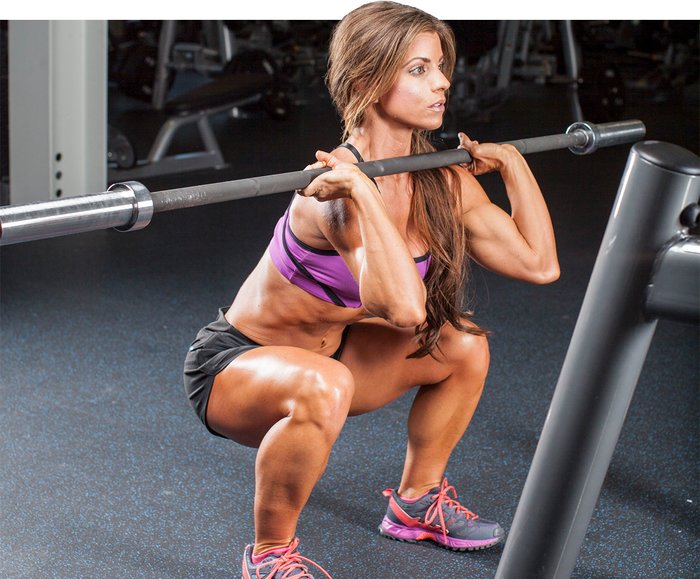
In the interest of avoiding any further development of the glutes and hips, opt for front squats instead. They shift more emphasis to the quads, so you don't have to worry about the middle of your X-frame getting blown out.
3. Incline Bench Press
Since the goal of this body type is to add the most beef up top, incline bench press takes priority over flat barbell bench. The angle of the incline press helps develop the upper chest into a thick shelf to complement the look of wider shoulders. The only way to build this kind of shelf is with a lot of heavy volume, so load up the barbell and train hard and heavy.
4. Single-Arm Dumbbell Row
While barbell rows are the best way to develop thick, flaring lats, they do require a certain amount of core recruitment to maintain proper posture and avoid rounding the lower back. Anything that works the core will also make it grow, which can and often does lead to a thicker midsection. Since the classic endomorph body type already has a naturally thicker waist, the bent-over barbell row would not be the best choice.
The better exercise for this body type is the single-arm dumbbell row. This exercise still isolates the lats, but since you brace yourself against the bench you won't run the risk of adding thickness to your core.
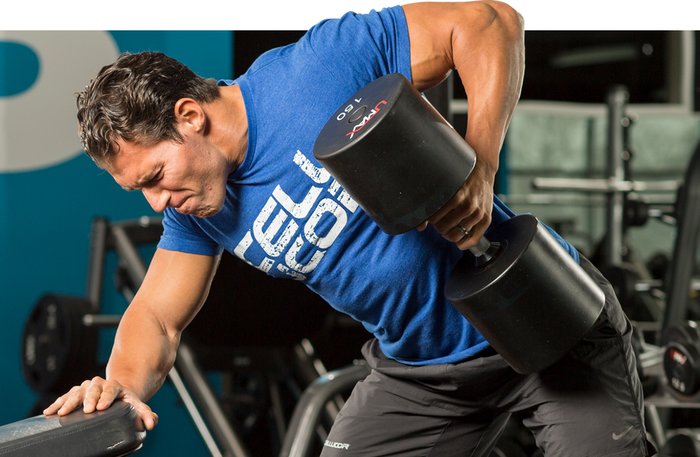
To completely take the core out of the equation and focus on pure lat contractions, you may even want to try doing single-arm or double-arm dumbbell rows lying face down on an incline bench.
5. Wide-Grip Chin-up
The wide-grip chin-up is the best upper-back builder there is. Since the chin-up is traditionally a bodyweight exercise, it forces those upper-back muscles to lift a lot of weight, which promotes better muscle growth. The wide grip adds width and size to the upper back.
If you're one of the many people out there who can't perform even one chin-up due to either a lack of strength, high bodyweight, or both, you can still use variations of this exercise to build up your muscles and work on your physique.
Both the assisted chin-up machine and underhand lat pull-downs offer the same benefits as the wide-grip chin-up, and you can adjust the weight to incrementally build up strength. Work hard and visualize getting a wider back with every rep!
Mesomorph
Congratulations! If you are a mesomorph, you've hit the genetic jackpot, and pretty much any type of hard, heavy training is going to result in a stellar physique.
Yet even among this blessed brotherhood, physique imbalances abound, making careful exercise-selection a must.
1. Incline Dumbbell Press
Even among men with impressive physiques, bottom-heavy chests are more common, and those with matching upper-chest thickness are few and far between.
Incline barbell presses are fine, but most lifters have difficulty recruiting their upper pecs. Thus, the front delts take over.
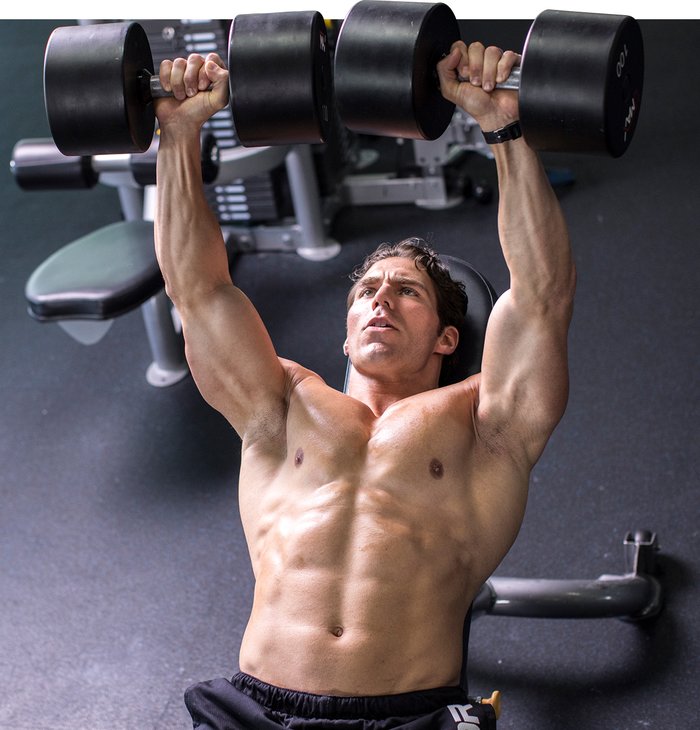
Using dumbbells allows you to target the upper pecs more easily and establish a better mind-muscle connection during the exercise. Dumbbells require more balance and coordination. They also allow for superior range of motion compared to the barbell, as well as providing stronger, more isolated contractions.
2. Hack Squat
Lagging legs are common in the lifting population in general. Of those who do have decent legs, few have the type of outer quad sweep that makes for exceptional lower-body definition.
The best exercise for developing the outer quads, mainly the vastus lateralis, is the hack squat.
Hack squats can be tough on the knees, so don't try to go super heavy or super deep. Choose a weight you can get to parallel with for 12-15 reps to start, then as your knees adapt you can go heavier over time.
3. Rear Dumbbell Lateral Raise
Once again, great front delts are very common, but side deltoid development is less so. Rarely do you see a serious lifter whose rear delts even remotely match the other two heads of the shoulder.
Rear delts, if they are even trained consistently, are typically shunted to the end of shoulder workouts where they have little chance of being hit properly.
To fix this, work your rear delts with rear dumbbell raises for just as many sets as would for the front and side versions. And don't wait to the end of your workout—if you have a muscle that needs to grow, do it first when you have the energy and focus to help it grow!
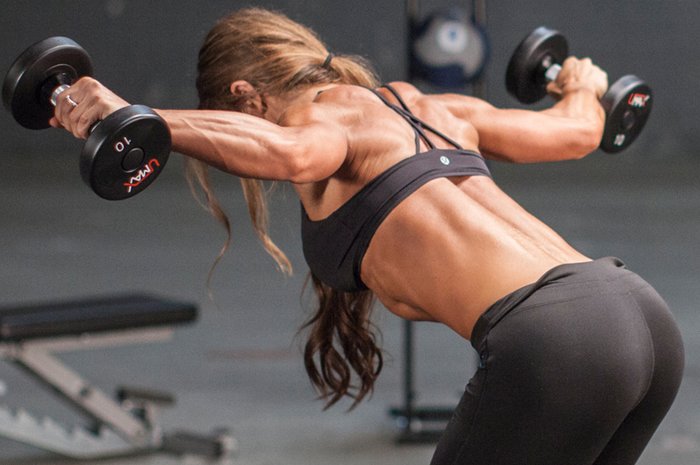
4. Romanian Deadlift (RDL)
Great quads aren't commonplace, but great hamstrings are even harder to find. Most of us train hamstrings after they've been wiped out by an hour or more of blasting quads, and do a couple of lackluster sets of lying leg curls before calling it a leg day.
RDLs with a barbell, done with a slight bend of the knee, are unparalleled for building hamstrings. Do your RDLs first on either a full leg day, or on a separate day devoted to hamstring work separate from the quads.
5. Seated Calf Raise
If you think well-developed hamstrings are hard to find, great calves are like unicorns—few, if any, exist. Granted, there is a significant genetic component to calf training, and low insertions are required to build monster calves.
That said, most of us never make the most of what we have due to half-ass training and—let's be honest—neglect. A couple sets of standing calf raises won't cut it. Standing exercises work the gastrocnemius, the diamond-shaped portion of the muscle visible on the outside. If impressive calves are your goal, you need to work the spade-shaped soleus muscle that lies underneath.
The only way to train the soleus is with the knees completely bent, as in the seated calf raise. Add a few heavy sets of 15-20 reps into your routine, along with standing calf raises and toe presses on a leg press. As with the rear delts, if you want bigger calves, make them a priority!
There you have it, the five best exercises for your body type. Start including them in all your workouts, and watch your physique grow and evolve ever closer to personal perfection!

